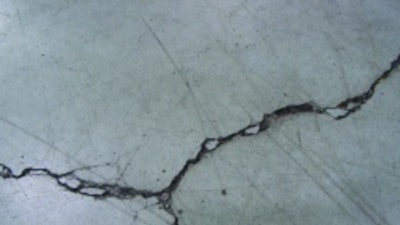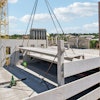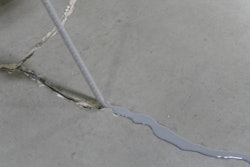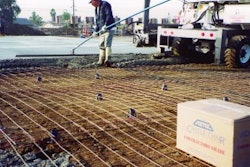
In general, there are two options for controlling cracks in slabs-on-ground:
- Control the location of cracking by installing contraction joints (does not control crack widths)
- Control crack widths by installing reinforcement (does not control crack location)
Option 1
Here, we tell the slab where to crack and widths of contraction joints or cracks in the joints are largely controlled by the joint spacing and concrete shrinkage. As joint spacings and concrete shrinkage increases, joint widths increase. Similar to cracks, if joint widths approach about 35 mils (0.035 inches), the efficiency of the aggregate interlock to transfer loads and prevent differential vertical movements across joints can be significantly reduced. For this reason, many designers use load-transfer devices including steel dowels, plates or continuous reinforcement through contraction joints to ensure positive load transfer and to restrict differential vertical movements across joints.
Option 2
Allow slabs to crack randomly but control crack widths with steel reinforcing bars or welded wire reinforcement. Typically, contraction joints are not installed with this option. Instead, cracking occurs randomly forming numerous, tightly held together cracks. Because of appearance, this crack control option should always be discussed with the owner.
Use caution when using both crack control options in the same slab. If too much reinforcement passes through contraction joints, joints become too stiff and may not crack and open as designed. When contraction joints fail to activate (i.e., crack and open) because of reinforcement, out-of-joint or random cracking typically occurs. If both options are used, it is necessary to limit the amount of reinforcement passing through joints to ensure proper activation.
For a more in-depth look into crack width control, read the article "How to Reinforce Concrete Slab on Ground to Control Cracking."
Additional resources:
Controlling Cracks in Concrete Slabs with Unusual Panel Geometries
















![Fcp Racatac Chair 10893876[1]](https://img.forconstructionpros.com/mindful/acbm/workspaces/default/uploads/2025/10/fcp-racatac-chair-108938761.10l0At5WXv.png?ar=16%3A9&auto=format%2Ccompress&bg=fff&fill-color=fff&fit=fill&h=135&q=70&w=240)



